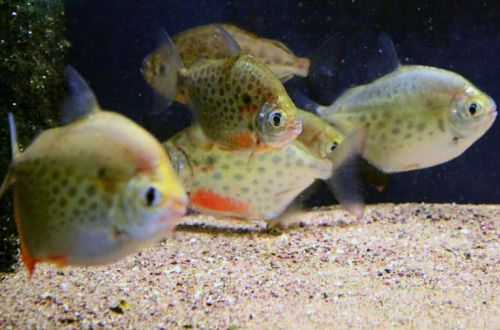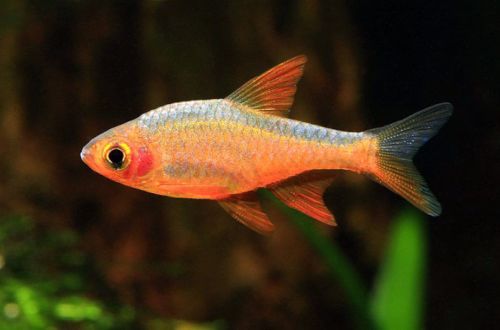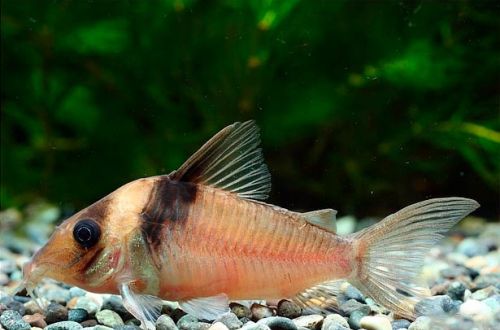
Metinnis Lippincotta
Metinnis Lippincott, scientific name Metynnis lippincottianus, belongs to the family Serrasalmidae. It belongs to the piranha group, but has a much more peaceful disposition than its famous relatives, and is easier to maintain. If you need a predatory-looking fish (but not one) to impress, then this species is perfect for this role.

Contents
Habitat
Comes from South America. The exact natural habitat has not been established. It is thought to be found throughout the middle and lower Amazon basin. Inhabits both main channels of rivers and numerous tributaries. Prefers regions with dense coastal vegetation.
Brief information:
- The volume of the aquarium – from 200 liters.
- Temperature – 23-27°C
- Value pH — 6.0–7.0
- Water hardness – 1–10 dGH
- Substrate type – any
- Lighting – subdued
- Brackish water – no
- Water movement – moderate
- The size of the fish is about 13 cm.
- Nutrition – plant-based food
- Temperament – conditionally peaceful
- Content – in a flock of 5 individuals
Description
Adults reach a length of about 13 cm. Young fish outwardly resemble another related species, the Silver Dollar, which is why they are sometimes confused when selling. With age, the differences become more pronounced and now the fish begins to resemble Metinnis spotted. Both species are almost identical, having a similar disc-shaped body shape, squeezed from the sides, a spotted pattern on a silvery or gray background, a reddish anal fin, the lower part of the head and chest.
It is necessary to distinguish between them, since they make different demands on their content. Metinnis Lippincott can be distinguished by the presence of a dark spot behind the head, which stands out from other more faded specks. In males, unlike females, the first rays of the anal fins are somewhat elongated, forming an outgrowth, and in the spawning state, the red pigment appears brighter.
Food
Considered an omnivore, however, given its diet in nature, the daily diet in the home aquarium should include a plant-based diet supplemented with protein foods such as bloodworms, small earthworms, insect larvae, etc.
Maintenance and care, arrangement of the aquarium
For a small group of fish, an aquarium of at least 200 liters is required, and its width and length must be greater than its height. The design principle is simple, the more vegetation the better, but this is where the main difficulty lies. The dietary habits of Metinnis Lippincotta prevent most aquarium plants from being used as they will either be eaten or severely damaged. In this situation, artificial plants are a good choice. Other important nuances that should be considered are a subdued level of lighting and the presence of an internal moderate current.
Successful long-term management depends on maintaining stable water conditions within acceptable temperature and hydrochemical ranges. Maintaining a stable aquatic environment depends on the smooth operation of the installed equipment and the regularity of certain mandatory aquarium maintenance procedures, such as weekly replacement of part of the water with fresh water and the timely removal of organic waste.
Behavior and Compatibility
Schooling fish, prefers to be in the company of relatives numbering at least 5 individuals. Peacefully tuned to other fish, provided that they are of comparable size or slightly larger. Any fish that can fit in their mouth will be considered food. As neighbors, species that live in the water column or near the bottom should be selected.
Breeding / breeding
At the time of writing, no successful cases of breeding in home aquaria have been recorded.
Fish diseases
It is an unpretentious and hardy fish. Health problems are associated with injuries, poor nutrition and inappropriate water composition. In the event of the appearance of signs of illness (lethargy, change in body shape, loss of appetite, etc.), it is sometimes enough to bring the conditions of detention back to normal so that the body copes with the problem. However, in some cases, medical treatment will have to be used. Read more about symptoms and treatments in the Aquarium Fish Diseases section.





